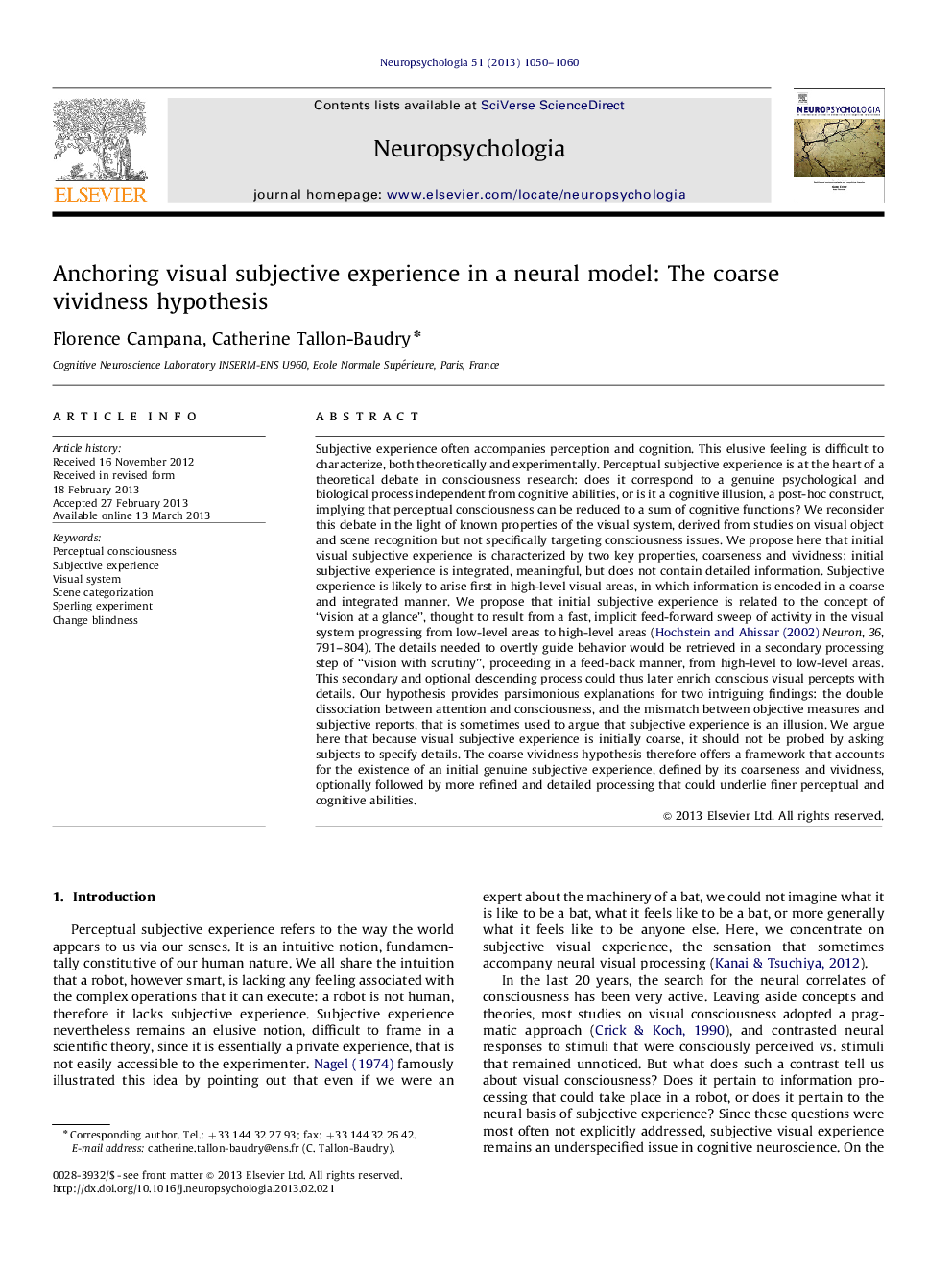| کد مقاله | کد نشریه | سال انتشار | مقاله انگلیسی | نسخه تمام متن |
|---|---|---|---|---|
| 944819 | 925712 | 2013 | 11 صفحه PDF | دانلود رایگان |

Subjective experience often accompanies perception and cognition. This elusive feeling is difficult to characterize, both theoretically and experimentally. Perceptual subjective experience is at the heart of a theoretical debate in consciousness research: does it correspond to a genuine psychological and biological process independent from cognitive abilities, or is it a cognitive illusion, a post-hoc construct, implying that perceptual consciousness can be reduced to a sum of cognitive functions? We reconsider this debate in the light of known properties of the visual system, derived from studies on visual object and scene recognition but not specifically targeting consciousness issues. We propose here that initial visual subjective experience is characterized by two key properties, coarseness and vividness: initial subjective experience is integrated, meaningful, but does not contain detailed information. Subjective experience is likely to arise first in high-level visual areas, in which information is encoded in a coarse and integrated manner. We propose that initial subjective experience is related to the concept of “vision at a glance”, thought to result from a fast, implicit feed-forward sweep of activity in the visual system progressing from low-level areas to high-level areas (Hochstein and Ahissar (2002)Neuron, 36, 791–804). The details needed to overtly guide behavior would be retrieved in a secondary processing step of “vision with scrutiny”, proceeding in a feed-back manner, from high-level to low-level areas. This secondary and optional descending process could thus later enrich conscious visual percepts with details. Our hypothesis provides parsimonious explanations for two intriguing findings: the double dissociation between attention and consciousness, and the mismatch between objective measures and subjective reports, that is sometimes used to argue that subjective experience is an illusion. We argue here that because visual subjective experience is initially coarse, it should not be probed by asking subjects to specify details. The coarse vividness hypothesis therefore offers a framework that accounts for the existence of an initial genuine subjective experience, defined by its coarseness and vividness, optionally followed by more refined and detailed processing that could underlie finer perceptual and cognitive abilities.
► Initial subjective experience is coarse but meaningful and integrated.
► Initial subjective experience could be related to gist perception at the top of the feed-forward sweep.
► Later feed-back processing would mediate detailed conscious vision for goal-oriented behaviour.
► Objective measures tapping onto details do not probe initial subjective experience.
Journal: Neuropsychologia - Volume 51, Issue 6, May 2013, Pages 1050–1060